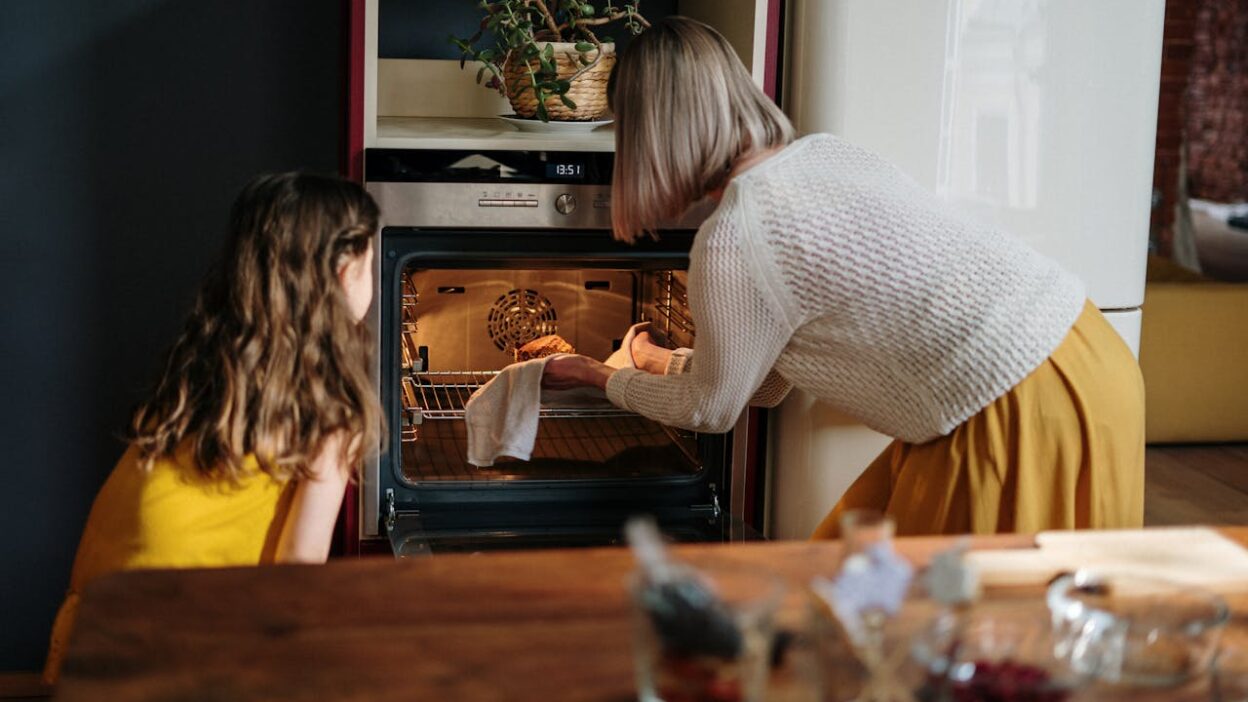Building healthy eating habits doesn’t have to be complicated or overwhelming. Whether you’re cooking for yourself or your whole family, small daily choices can make a big difference in your relationship with food. This blog post offers practical, proven strategies to transform your eating habits, from making breakfast a priority to creating positive mealtime experiences. By focusing on sustainable changes rather than strict rules, you can develop lasting habits that nourish both body and mind.
Start with Regular, Balanced Meals
One of the best ways to build healthy eating habits is by eating meals at regular times each day. When you stick to a consistent routine, you help your body know when to expect food. This helps regulate your hunger levels and reduces the chance of overeating or snacking on less healthy options out of convenience.
Skipping meals or eating at random times can throw your body off balance. You might feel tired, irritable, or experience sudden cravings, especially for sugary or high-calorie foods. That’s because your energy dips, and your body looks for a quick boost. Eating on a regular schedule gives you steady energy throughout the day, which helps you stay focused and feel your best.
It’s not just about when you eat, it’s also about what you eat. A balanced meal includes a mix of whole foods: lean proteins (like eggs, beans, or chicken), fiber-rich carbs (like brown rice or whole grain bread), and healthy fats (like avocado or olive oil). Adding vegetables or fruits rounds things out with vitamins, minerals, and fiber.
Here’s a simple rule of thumb: Try to include at least three food groups in every meal. For example, a lunch with grilled chicken, quinoa, and steamed broccoli gives you protein, carbs, and veggies, all working together to keep you full and energized.
By eating regular, balanced meals, you create a strong foundation for healthy habits. You’ll feel more in control of your food choices, have better energy, and avoid those mid-day crashes or late-night cravings.
Make Breakfast a Daily Priority
Breakfast is more than just the first meal of the day. It’s your body’s first chance to refuel after a night of rest. Eating a healthy breakfast each morning can boost your energy, improve your focus, and help you make better food choices throughout the day.
When you eat breakfast, you give your body the nutrients it needs to jumpstart your metabolism and keep your blood sugar stable. This helps you avoid the mid-morning energy crashes that often lead to unhealthy snacking. A good breakfast also supports mental clarity, helping you concentrate, solve problems, and stay productive, whether you’re heading into work, school, or a busy day of errands.
Still, many people skip breakfast, not because they don’t believe it’s important, but because they’re not hungry in the morning, pressed for time, or just not in the habit. If that sounds familiar, try starting small. Something as simple as a piece of fruit, a boiled egg, or a slice of whole-grain toast can make a difference. The key is to find foods you enjoy and that work for your morning routine.
Aim for a mix of:
- Protein (like eggs, Greek yogurt, or nut butter)
- Whole grains (like oatmeal or whole-wheat toast)
- Fruits or vegetables (like berries or spinach)
- Healthy fats (like avocado or nuts)
These ingredients work together to keep you full longer and give your body lasting energy.
Making breakfast a daily habit can also support a healthy weight, improve digestion, and lower your risk of chronic health issues over time. And for families, eating breakfast together can model healthy behaviors and help kids develop a stronger connection to food.
Plan Meals and Snacks Ahead of Time
Planning your meals and snacks ahead of time is one of the easiest ways to stick to healthy eating habits. When you know what you’re going to eat, you’re less likely to make last-minute choices that leave you hungry, stressed, or reaching for less nutritious options.
Meal planning doesn’t have to be complicated or time-consuming. It can be as simple as writing down what you’ll have for breakfast, lunch, and dinner over the next few days. You can even start by planning just one meal per day and build from there. The goal is to make healthy eating feel easier and more manageable.
Here’s how planning ahead can help:
- It saves time and stress. Knowing what to cook each day removes the guesswork and reduces those “what’s for dinner?” moments.
- It makes grocery shopping more efficient. With a plan, you can create a focused shopping list and avoid impulse buys.
- It encourages balanced meals. You’re more likely to include fruits, vegetables, whole grains, and protein when you plan intentionally.
- It supports better snacking. Having healthy snacks like cut-up veggies, fruit, nuts, or yogurt on hand keeps you from grabbing ultra-processed foods out of convenience.
Try prepping ingredients in advance, like washing produce, cooking a batch of grains, or portioning out snacks for the week. Store meals in containers you can grab quickly when you’re short on time. Even small steps like making a big pot of soup or overnight oats can make your week smoother.
By thinking ahead, you reduce daily food decisions and set yourself up for success. It’s a simple but powerful habit that turns healthy eating from a chore into a routine you can stick with.
Involve the Whole Family in Meal Prep
Cooking together as a family isn’t just about getting dinner on the table. It’s a powerful way to build healthy eating habits while spending quality time with the people you love. When everyone has a role in preparing meals, it turns food into something shared, not just served.
Involving kids and adults in meal prep encourages healthier choices. You’re more likely to include fruits, vegetables, whole grains, and other balanced ingredients when the whole family is part of the planning. Over time, this helps everyone, especially children, learn what goes into a nutritious meal and why it matters.
Here’s how family involvement can make a big impact:
- It builds confidence and life skills. Kids learn how to follow recipes, measure ingredients, and practice kitchen safety, skills that serve them for life.
- It encourages trying new foods. Children (and even adults) are more likely to try something they helped cook. It turns “I don’t like that” into “I made that!”
- It creates structure and routine. Prepping meals together at regular times helps establish consistent eating patterns and reduces random snacking.
- It reduces stress around mealtime. Sharing the work makes cooking feel less overwhelming, especially on busy nights.
- It sparks meaningful conversation. Cooking together is a chance to slow down, talk, laugh, and connect, without screens.
- It fosters gratitude and appreciation. When everyone pitches in, there’s a deeper understanding of the effort behind each meal.
- It helps accommodate dietary needs. Involving the whole family makes it easier to plan meals that suit everyone’s needs, including allergies or sensitivities.
- It saves time and money. Planning and cooking together can cut down on last-minute takeout and reduce food waste.
You don’t need to prepare a gourmet meal or assign everyone a complicated task. Even something as simple as letting a child wash vegetables, stir a sauce, or pick a recipe builds healthy habits and family connection. The kitchen is one of the best places to teach and build healthy eating habits.
Keep Healthy Foods Visible and Ready to Grab
When healthy foods are easy to see and quick to grab, you’re more likely to eat them. It’s a simple trick that makes a big difference. Out of sight often means out of mind, especially when you’re busy or hungry.
Start by organizing your fridge and pantry so that nutritious options are front and center. Place washed fruit in a bowl on the counter or at eye level in the fridge. Pre-cut veggies and store them in clear containers. Keep whole-grain crackers, nuts, or yogurt in easy-to-reach spots. The goal is to make the healthy choice the easy choice.
This strategy works especially well for kids. When snacks like apples, baby carrots, or string cheese are ready to go, they’re more likely to grab those instead of chips or cookies. It also encourages more mindful snacking. Foods that are prepped and portioned are less likely to be eaten mindlessly.
Here are a few helpful tips:
- Prep once, enjoy all week: Wash and cut fruits and veggies after grocery shopping so they’re ready to eat.
- Use clear containers: Seeing healthy foods makes them more tempting.
- Create a “snack zone” in the fridge: Fill it with nutritious grab-and-go items like boiled eggs, hummus, or whole grain wraps.
- Store less healthy foods out of sight or in harder-to-reach places: This adds a small pause that can help you make more intentional choices.
Small changes to how you store and display food can shape your habits in a big way. When healthy options are easy to grab, you’ll eat better without even thinking about it.
Stay Hydrated: Choose Water Over Sugary Drinks
Drinking enough water every day is one of the simplest ways to support your overall health, and it plays a big role in building healthy eating habits, too. Water helps your body stay energized, focused, and balanced, and it can even curb unnecessary snacking by helping you tell the difference between hunger and thirst.
Instead of reaching for sugary drinks like soda, energy drinks, or juice, try making water your go-to beverage. Sugary drinks may give you a quick burst of energy, but they often lead to crashes, and they add extra calories without much nutrition. Water, on the other hand, hydrates your body without any added sugar, helping to support weight management, digestion, and even your mood.
Here are some simple ways to stay hydrated throughout the day:
- Start your day with water. Drink a glass as soon as you wake up to help your body reset after a night’s sleep.
- Sip before meals. This can aid digestion and help prevent overeating.
- Carry a reusable bottle. Having water nearby makes it easy to take a few sips regularly, whether you’re at home, work, or on the go.
- Add natural flavor. Not a fan of plain water? Try adding slices of lemon, cucumber, or berries for a fresh twist.
- Eat water-rich foods. Fruits and veggies like watermelon, cucumber, and oranges also help you stay hydrated.
Making water your first choice helps create a ripple effect, literally. You’ll feel more refreshed, reduce your intake of sugary drinks, and support everything from brain function to skin health.
The key is consistency. Drink water regularly throughout the day, not just when you’re thirsty. Over time, this small habit becomes second nature and a big part of a healthier lifestyle.
Use Portion Awareness, Not Pressure
One of the most effective ways to support healthy eating, especially in children, is by teaching portion awareness rather than pressuring them to eat everything on their plate. When people are encouraged to tune in to their own hunger and fullness cues, they’re more likely to develop a natural, healthy relationship with food.
Instead of saying “just one more bite” or insisting that plates be cleared, focus on helping everyone understand what a balanced portion looks like and how to recognize when they’re satisfied, not stuffed.
Here are some simple ways to encourage portion awareness:
- Use everyday objects to guide portions. A child’s closed fist can represent a serving of rice or fruit. A palm-sized amount works for meat, and a thumb is a good estimate for fats like peanut butter or cheese.
- Offer kid-sized plates and utensils. These naturally promote smaller portions and make meals feel more manageable, especially for younger eaters.
- Let kids serve themselves. Allowing children to decide how much to take builds confidence and helps them listen to their appetite. You can always reassure them that more food is available if they’re still hungry.
- Avoid distractions at meals. Eating without screens makes it easier to recognize fullness and helps the brain connect with the body’s signals.
- Be a role model. Show what balanced portions look like by serving yourself with intention and stopping when you feel satisfied.
Portion awareness supports healthy digestion, balanced nutrition, and long-term habits like eating mindfully and avoiding overeating. It also removes the pressure and power struggles that can turn mealtime into a battleground.
Avoid Food Battles and Negative Talk
Creating a calm and positive mealtime environment is one of the best ways to build healthy eating habits, especially for kids. When meals become a source of pressure or conflict, it can lead to stress, picky eating, or unhealthy food relationships that last into adulthood.
Instead of forcing bites, arguing over vegetables, or using phrases like “you have to finish your plate,” focus on encouragement, curiosity, and conversation. Children (and adults!) are more likely to try new foods and listen to their hunger cues when they feel relaxed and supported, not judged or pressured.
Here’s how to shift the tone at mealtimes:
- Keep mealtimes pressure-free. Avoid using food as a reward or punishment. Let everyone eat at their own pace and stop when they feel full.
- Use neutral language. Avoid labeling foods as “bad” or “fattening.” Instead, talk about how different foods help the body grow, move, and feel strong.
- Be a calm role model. Your own attitude toward food influences the people around you. When you enjoy meals without stress or guilt, others learn to do the same.
- Focus on connection, not control. Make meals about spending time together, not checking off what’s eaten. Use this time to chat, laugh, and bond.
- Respect personal preferences. If someone doesn’t like a certain food, don’t turn it into a battle. Keep offering a variety of options. Over time, tastes can change!
When meals are calm and enjoyable, people are more likely to eat mindfully, try new things, and build confidence in making their own food choices. Reducing stress at the table helps everyone, especially kids, develop a healthy relationship with food that’s based on trust, not tension.
Mix It Up: Try New Foods Often
Eating a wide variety of foods isn’t just more fun, it’s better for your body, too. Different foods give you different nutrients, so the more variety you have in your meals, the more balanced your overall nutrition will be.
New doesn’t have to mean unusual or exotic. It can be as simple as picking a different vegetable at the store, cooking a favorite food in a new way, or swapping out your usual snack for something you haven’t had in a while.
Here’s why variety matters:
- Better nutrition: Each food brings something unique to the table, like fiber, vitamins, antioxidants, or healthy fats. A mix of foods helps cover all your nutritional needs.
- Supports gut health: A diverse diet helps feed different types of good bacteria in your gut, which can improve digestion, immune health, and even your mood.
- Prevents food boredom: Changing up your meals keeps things fresh and exciting, so healthy eating never feels like a chore.
- Builds tolerance and reduces sensitivities: Introducing a wide range of foods can help the body adapt to different ingredients, lowering the chance of developing food sensitivities over time.
- Reduces exposure to contaminants: Eating from a small set of foods may increase your risk of repeated exposure to pesticides or heavy metals. Variety helps reduce that risk.
- Supports sustainability: Choosing seasonal, local produce adds variety and helps the environment by reducing food miles and supporting local farmers.
For families, especially with young kids, it may take 10 or more tries before a new food is accepted, and that’s totally normal. Keep offering it without pressure. Serve new foods alongside familiar ones, and try them in different forms (raw, roasted, blended, etc.).
Here are a few fun ways to mix it up:
- Try a “new fruit Friday” or “meatless Monday” each week.
- Pick one new item during every grocery trip.
- Cook a dish from a different culture once a month.
- Let your kids choose a new recipe to try together.
The more often you explore new options, the easier it becomes to maintain variety in your diet. And over time, that variety turns into balance, helping you stay on track with your healthy eating goals without it ever feeling boring.
Support Healthy Eating with Physical Activity
Healthy eating and physical activity go hand in hand. When you combine the two, you give your body what it needs to feel strong, energized, and balanced, both inside and out. Eating well provides the fuel, and staying active helps your body use that fuel in the best way possible.
Regular movement can boost the benefits of your healthy meals by helping manage weight, improve digestion, support muscle and bone strength, and reduce the risk of many chronic illnesses like heart disease and type 2 diabetes. It also supports your mental health by easing stress, improving mood, and helping you sleep better.
Here’s how to make physical activity a natural part of your healthy lifestyle:
- Start small and stay consistent. Even short walks, stretching, or dancing in the living room count. The goal is to move your body regularly.
- Choose activities you enjoy. Whether it’s gardening, biking, yoga, or playing with your kids, doing something fun makes it easier to stick with it.
- Make it a family thing. Active time together, like going for a hike or kicking a ball around, builds strong bodies and strong bonds.
- Balance your meals with your movement. Fuel up with nutritious foods before activity and recover with healthy snacks after. This keeps your energy levels steady and supports muscle recovery.
- Listen to your body. On lighter activity days, you might not need as much food. On busier or more intense days, give your body a bit more nourishment to match your energy needs.
Being active doesn’t mean spending hours at the gym. It’s about moving more in ways that feel good to you. When you pair physical activity with healthy eating, you create a routine that supports long-term well-being and helps you feel better every single day.
Keep It Simple and Sustainable
When it comes to healthy eating, you don’t need to overhaul your entire lifestyle or follow complicated rules to make progress. In fact, the most effective habits are the ones that are simple, realistic, and easy to stick with over time.
Just be consistent! That means choosing meals and routines that work for your life, your schedule, and your preferences. Healthy eating should feel doable, not overwhelming.
Here’s how to keep it simple and sustainable:
- Start small. Focus on one change at a time, like adding a vegetable to lunch, drinking more water, or preparing breakfast at home.
- Repeat what works. It’s okay to eat similar meals throughout the week if they’re balanced and satisfying. You don’t have to reinvent the menu every day.
- Plan ahead, just a little. A short grocery list or a rough weekly meal plan can prevent last-minute decisions that lead to less healthy choices.
- Use what you have. Healthy meals don’t require fancy ingredients. Frozen veggies, canned beans, and leftovers can be part of a balanced plate.
- Give yourself grace. Life happens. One off-day or indulgent meal doesn’t undo your progress. The key is getting back to your routine without guilt.
The goal here is to eat better, most of the time, in a way you can keep going. When healthy eating fits your lifestyle, it becomes second nature. And that’s how real, lasting change happens.



